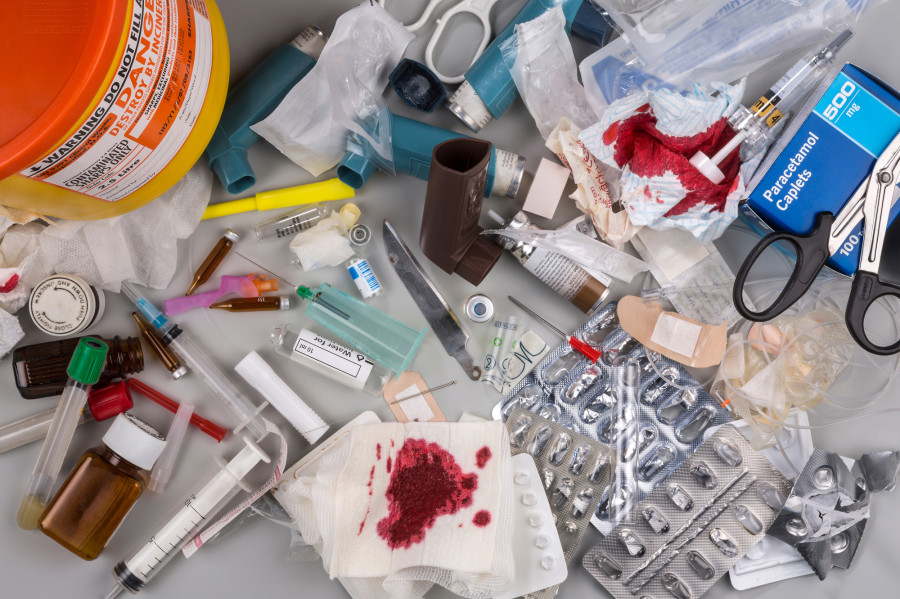Editorial
Managing biomedical waste is imperative
Healthcare institutions’ hazardous practices cannot continue
It is frustrating to find out that healthcare professionals and hospitals do not care about how waste produced by them is disposed of, considering that they know of its hazardous nature. It is even more difficult to understand how the governments at various levels do not have strict mechanisms to find and punish violators appropriately, considering that the improper disposal of hazardous medical waste can cause much harm—even death and disease—to the larger public. In light of revelations of the lax procedure surrounding the management and disposal of biomedical waste, it is clear that a complete change of attitude, processes and enforcement is required in this field.
The case of Seti Maya Chamini, a sanitation worker for Kathmandu Metropolitan City who suffered an infection that led her fingers to be amputated after being pricked by a stray needle when picking up road waste, highlights the dangers of careless waste management. Sadly, her case is one of many, with workers for the city citing many incidences of infections—including deadly tetanus—that have plagued sanitation workers and waste management personnel. Most of these could have been avoided, had the various healthcare facilities and the concerned authorities taken hazardous medical waste treatment and disposal seriously.
A 2014 study covering 63 hospitals had found that these hospitals create up to 1,551 kgs of hazardous waste daily. In February 2019, it was found that most private hospitals housed in rented residential buildings lack proper hazardous waste management systems—wherein the waste is segregated, but left untreated and passed over waste to collectors. According to the WHO, such waste poses many health risks, such as the potential to inflict physical injury (stabs from sharps such as needles), chemical burns, toxic exposure to pharmaceuticals, radiation exposure, and exposure to infectious and disease-causing microorganisms.
In May 2018, the government made grand promises of cleaning up hazardous waste, launching a campaign called the ‘Nepal Clean Environment Mega Campaign.’ It assured the public of its commitment to regulate all such waste, including biomedical waste, acknowledging their short- and long-term health and pollution risks. Yet, more than a year on, it has come to light that five state-run hospitals and more private hospitals have been caught mixing up hazardous waste with the other kind. The charge these hospitals faced for such grave errors were fines capped at Rs15,000; a slap on the wrist for these hospitals and a slap on the face of the waste management personnel having to clean up at great personal risk and the larger public having to face the risk of exposure.
What's more, the fine was levied by the local environment department. While waste management is under this department’s purview, the hazardous nature of the waste and its source would make it also the responsibility of the Provincial Health Office. However, this office has been citing the lack of funds and personnel to enforce regulations. It is disheartening to realise that healthcare institutions, including private hospitals that charge exorbitant fees and promise better quality care, can be so lax in the disposal of life-threatening materials produced as a direct result of their business. The lack of strict enforcement of regulations by the government is also worrisome, especially when many of the offenders are state-run hospitals. At the very least, thorough autoclaving of potentially infectious mediums and the separate collection, management and processing of biomedical waste is a must.




 13.12°C Kathmandu
13.12°C Kathmandu














